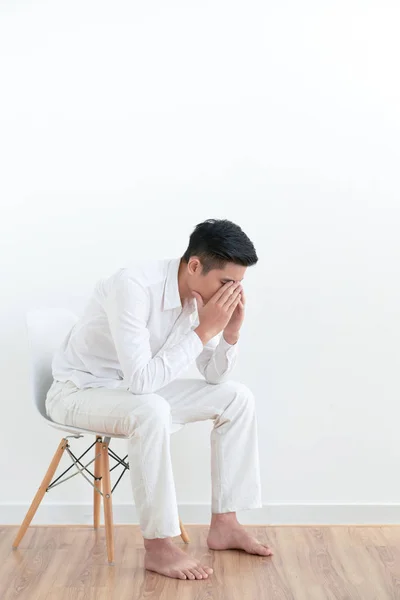Why are my legs tired?
Tired legs are a fairly common symptom with a variety of underlying factors. You may have an increased risk for tired legs if you’re female, overweight, or older. Tired legs can also occur in people who regularly sit or stand for extended periods of time.
Read on to learn more about this symptom, including common causes and treatments.
A variety of factors can cause tired legs. Tired legs may be accompanied by pain, soreness, or cramping. Tired legs aren’t usually a cause for concern, but it’s still important to pay attention to your body when tiredness occurs. This is especially so if you have other symptoms.
Here are some possible causes for tired legs:
If you’ve recently used your legs more than normal, they may feel tired. Make sure you’re getting enough rest and working within the limits of your body. This will help you avoid stress, strain, and injury.
If you frequently use your legs while working, take plenty of breaks throughout the day.
Not using your legs can also cause leg tiredness. If you have to sit for extended periods, make a point to stand and be active for at least five minutes every hour.
If you’re spending an extended amount of time in bed, do simple leg-raising exercises and stretches each hour. Elevate your legs on pillows.
Overuse of your legs can lead to muscle cramps. Muscle cramps can cause your legs to feel tired.
Allow your legs and body plenty of time to rest until your symptoms subside. See your doctor if cramping becomes severe. Here are more ways to stop leg muscle cramps.
Hypokalemia occurs when you have low levels of potassium in the bloodstream. This can cause:
Certain medications or conditions may cause hypokalemia. See your doctor to determine the underlying cause and best treatment option for you.
You may have tired, heavy, or aching legs if you have varicose veins. These occur when your veins don’t work properly and begin to collect blood. This causes your veins to enlarge and swell.
Usually self-care measures, such as exercise, elevation, and compression stockings, can help alleviate these symptoms. See your doctor if your symptoms don’t improve.
Your legs may feel tired or fatigued if your blood isn’t circulating through your body properly. Poor circulation often affects the lower part of your body since it’s harder for blood to flow upward toward your heart. Sometimes blood can collect in your legs, ankles, and feet.
You may be able to improve poor circulation by:
See your doctor if you’ve taken steps to improve your circulation but haven’t seen improvement. Your doctor may prescribe medication to improve your circulation.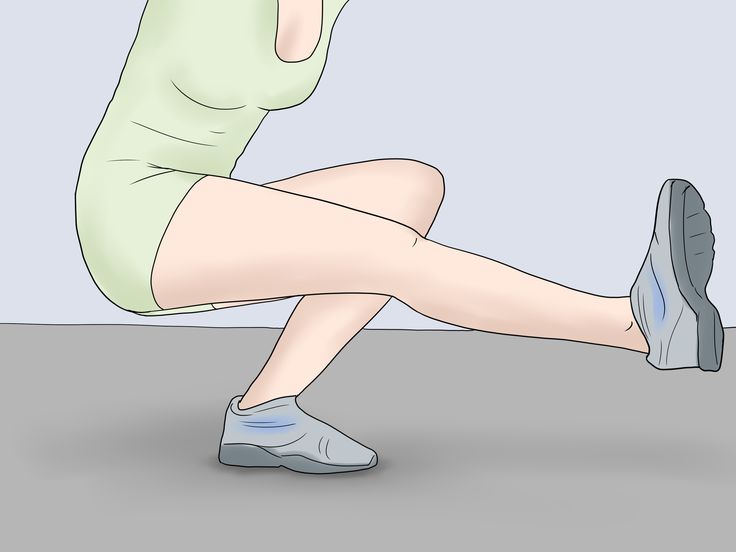
Swelling in pregnancy can be caused by:
Your legs may feel tired and uncomfortable as a result. You may experience cramping and varicose veins.
Sleeping on your left side can help reduce some of the pressure from the vein that circulates blood from your lower body to your heart. You can also try these five exercises.
See your doctor if you experience any sudden or severe swelling. This could be a sign of preeclampsia.
Muscle fatigue or heavy legs can be a sign of MS. In fact, fatigue is the most commonly reported symptom among people with this condition. Heat and humidity may make fatigue worse.
MS causes fatigue because the condition affects your nerves and disrupts the communication between your brain and your muscles.
Other symptoms of MS include:
MS requires a diagnosis from your doctor.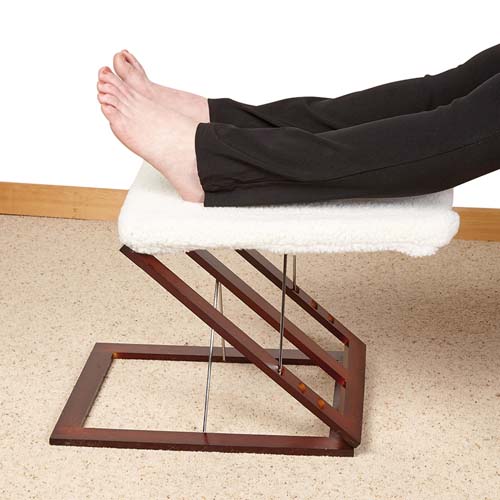 Talk to your doctor if you suspect MS.
Talk to your doctor if you suspect MS.
In many cases, you can treat tired legs at home.
Dry brushing may help stimulate circulation, boost energy, and promote lymphatic drainage. An added benefit of dry brushing is that it can help exfoliate your skin.
Use a brush with natural bristles. Start with your feet and move upward toward your heart. Do this for 10 to 15 minutes before a cool shower.
Soaking in a warm bath can help you relax while taking pressure off your legs and boosting circulation. Add up to 2 cups of sea salt, Epsom salt, or baking soda. Soak in the bath for at least 20 minutes.
A foot bath may help revive tired feet by reducing aches, pain, and inflammation.
Add 1 cup each of Epsom salt, sea salt, and vinegar to a warm tub of water. Soak your feet for at least 20 minutes.
One study found that using apple cider vinegar topically may help reduce varicose veins symptoms, such as cramping, pain, and fatigue.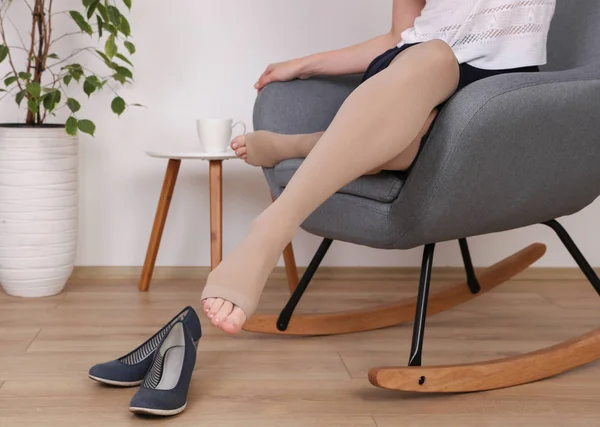
You can rub the vinegar onto your legs, or you could try adding some to a bath.
This approach involves the following:
This technique may help improve circulation as well as relieve discomfort and swelling.
A massage may help relieve leg fatigue. If it’s possible, book a massage with a certified massage therapist. You can also practice self-massage by rubbing an oil or ointment into your feet and legs.
You may wish to use a capsaicin gel or cream for pain relief and improved circulation.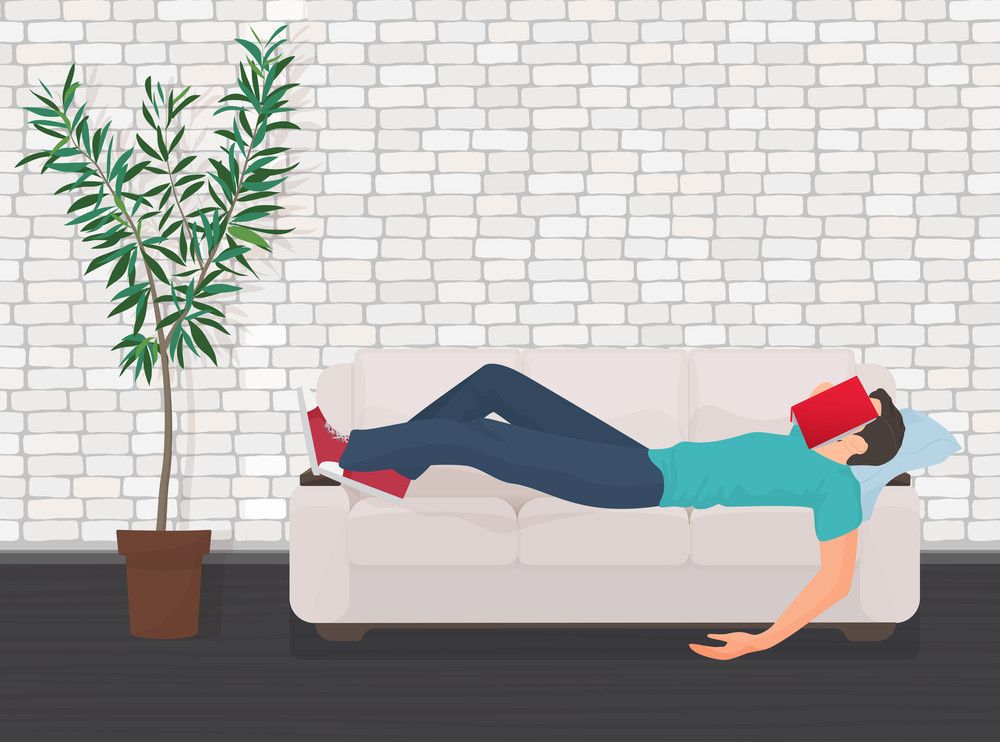
There are some simple exercises you can do to help relieve tired legs. Even a minute of these exercises can get your blood flowing.
There are some things you can do to prevent or reduce your risk for tired legs:
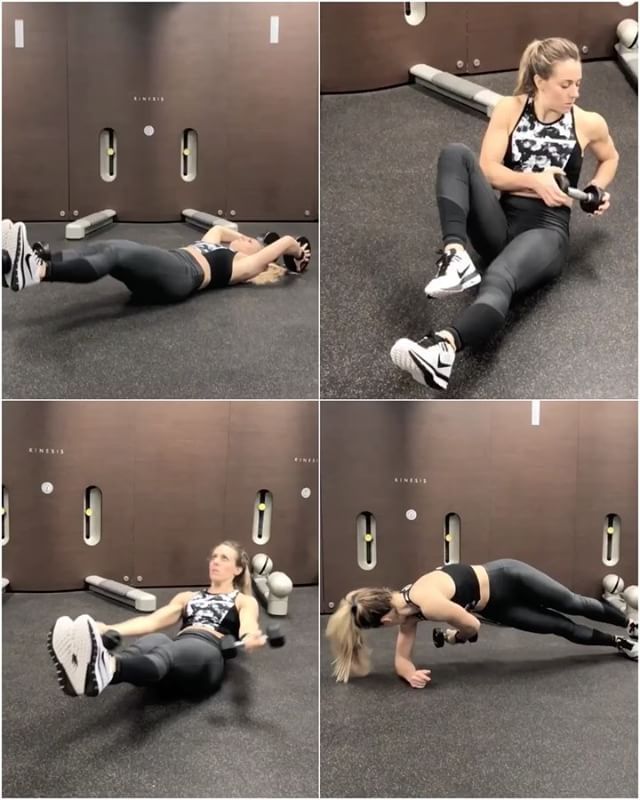 Add padded insoles for additional support.
Add padded insoles for additional support. Usually, resting and home remedies will be effective in relieving tired legs. However, if your legs still feel tired after at-home treatment or if the tiredness has persisted for more than a few days, make an appointment with your doctor.
Also see your doctor if you’re experiencing any pain, dysfunction, or discomfort. Your doctor can determine if there’s an underlying condition that’s causing your legs to be tired.
In most cases, taking time to rest and take care of yourself will be enough to regain energy in your legs. Your legs do a lot for you. They deserve a bit of special treatment every now and again!
But if you regularly experience a feeling of tiredness in your legs or have unexplained pain or swelling, talk to your doctor.
Sometimes it feels like we’re on our feet the entire day - and even if we’re not, it’s common for legs to feel tired, achy, uncomfortable or restless. We’ve spoken to a whole host of experts to find out the best ways to remedy this - and ensure your legs are feeling energised once again.
From bath hacks to yoga poses, here’s what you should be doing if you’ve noticed your legs are lagging behind and need a boost (and if your symptoms start bothering you on a regular basis, always speak to your GP to rule out anything more serious).
1. Run a bath, pronto
“Epsom salt is the household name for magnesium sulphate, which releases magnesium and sulphate ions when added to water,” explains Sarah Mayo, a qualified personal trainer and the co-founder of wellbeing company Point3Wellbeing. “Some studies have suggested that soaking in Epsom salts helps to replenish the body of magnesium."
“Some studies have suggested that soaking in Epsom salts helps to replenish the body of magnesium."
2. Give yourself permission to chill
Most of us know the benefits of cold therapy – think about that relieving cold pack to soothe muscle pain - but doing it on the go can prove tricky. Deep Freeze Pain Relief Glide-On Gel works like ice - delivering a fast, cooling action and soothing relief from any sharp, shooting pain in swollen or inflamed feet and legs. Even better, this scientifically-proven cold therapy in a handbag size can be used as often as required wherever you are. No cumbersome cool-box required...
3. Stretch it out
According to physiotherapist Aaron Armoogum, stretching is key to keeping our legs feeling happy and pain-free. “Tight hip flexors will alter the tilt of your pelvis which is a nightmare when it comes to lower limb and lumbar issues - it can cause a lot of aching and discomfort,” he says. “Equally important are our glutes and piriformis (muscles in the buttocks).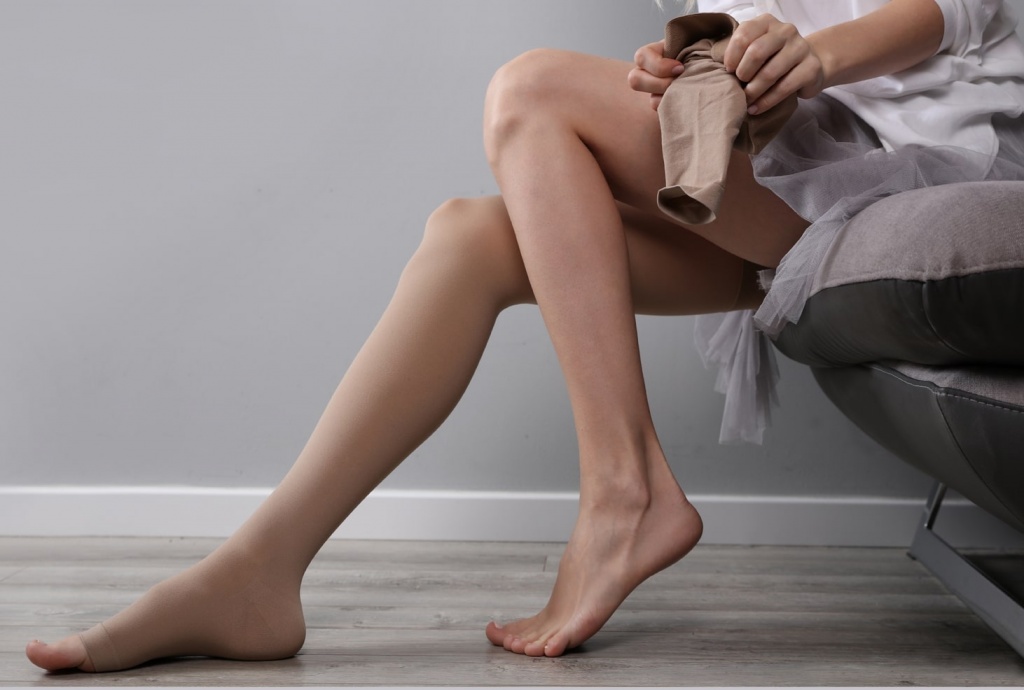
"To get started, a really simple hip flexor stretch is to bend your right knee while standing, and hold your ankle from behind. Bring your heel towards your backside as far as you can, and feel the stretch across the front of your thigh. Just make sure you don’t bend at the hips and make it too easy!”
4. Take it down a notch
We’re all busy and sometimes, the idea of ‘resting’ seems laughable. But it’s just as important as anything else on your to-do list, says Aaron. “When it comes to exercise, a lot of people I see tend to ‘over-train’ or repetitively do the same workout or exercise over and over. Without allowing the body to rest and actually repair itself can potentially lead to long term chronic pain. I always recommend resting as much as you need to – it’s when our body grows, recovers and recuperates. Lack of rest can contribute not just to aching legs, but a feeling of general fatigue or exhaustion too. Nobody wants that!”
5. Pose like a pro
According to yoga teacher Hannah Lovegrove there’s a simple fix for tiredness from physical exertion.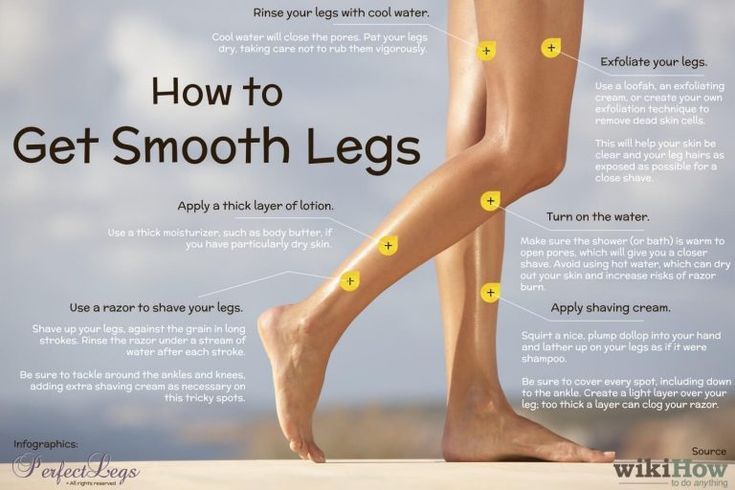 She explains, “I’d recommend yoga pose, Virasana - also known as ‘Hero Pose’. The compression effect is deeply refreshing for the leg muscles, knee and ankle joints and it leaves the legs feeling light and fully stretched.
She explains, “I’d recommend yoga pose, Virasana - also known as ‘Hero Pose’. The compression effect is deeply refreshing for the leg muscles, knee and ankle joints and it leaves the legs feeling light and fully stretched.
"Try it yourself: Kneel down with your knees together and feet apart with a big cushion or some blocks behind you, between your feet. Sit down on the support and if it’s painful for your knees, add more height. Sit tall, hands resting on your thighs, for 2-4 minutes. When you come out of the pose, stretch your legs forward for a few seconds, to straighten the knee ligaments.”
6. Put your feet up
Yes, really - we insist. Hannah has another smart move that can reduce swelling or restlessness in the lower legs, when needed. "Inverted Lake Pose (known as viparita karani in yoga) is great if you've been on your feet or in a stationary position for a long time, since our blood and lymph flow can become sluggish. Sit close to and facing a wall then swivel sideways and take your legs straight up the wall as you lie down, back flat against the floor. Wriggle in, so your bottom is touching the wall and give it ten minutes before standing up." Legs feeling refreshed?
Wriggle in, so your bottom is touching the wall and give it ten minutes before standing up." Legs feeling refreshed?
7. Keep sipping
How much water do you drink? Dawn Morse Msc, a sports science lecturer and founder of Core Elements says we should all be reaching for the h30 on a more regular basis. “Staying hydrated, especially during warmer summer months, can help to reduce muscle cramping,” she explains. “The main reason for this is that it helps to regulate our mineral levels, which can lead to muscle cramping when out of sync. If you’ve been doing a lot of exercise in the heat, or sweating more than normal, you could consider adding an electrolytes supplement too.”
8. Ditch the extra salt
Did you know in some instances, modifying your diet can help with leg pain? According to Dawn, "research has shown that diets low in potassium, calcium or magnesium can lead to muscle cramps, so we should aim to include foods like sweet potatoes, squash and broccoli (which are full of potassium) yogurt, sardines, lentils and cheese (for calcium) and spinach, quinoa and tofu (for magnesium).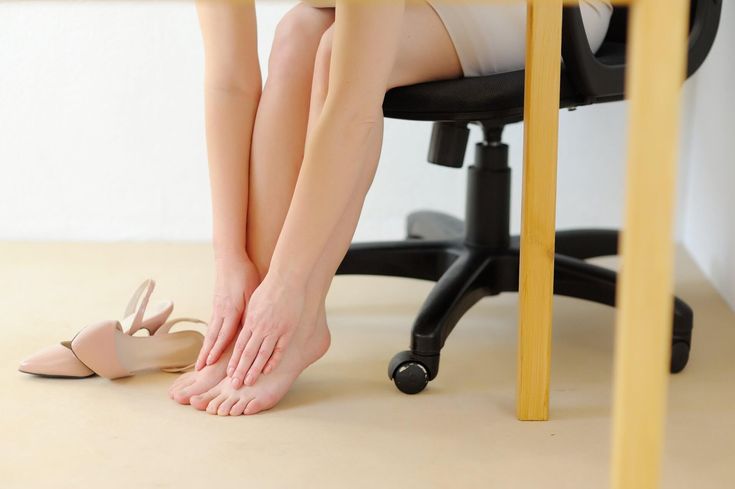 If your salt intake is high thanks to processed foods and added salt, aim to lower it - along with muscle and leg pain, it can lead to dehydration and raised blood pressure,” Dawn explains.
If your salt intake is high thanks to processed foods and added salt, aim to lower it - along with muscle and leg pain, it can lead to dehydration and raised blood pressure,” Dawn explains.
9. Walk it out
Exercise and stretching has been shown to help with leg pain - especially aches and discomfort that gets worse as the day continues or is chronic in nature - meaning moving around a bit can really help.
“Aim to walk briskly for 20-30 minutes a day,” says Dawn. “It’s not only good for the heart, but it helps to strengthen and stretch leg muscles as well as improve the quality of the muscles - all smart moves for anybody experiencing discomfort, cramps or a tired sensation in the legs.” And since Deep Freeze Glide-on Gel promises no mess and an easy glide-on application, it’s worth throwing in your bag for cooling, targeted relief on-the-go, too. Happy strolling!
Experts quoted in this article do not endorse any brands.
For a cool, soothing way to relieve tired or sore legs Deep Freeze Pain Relief Glide-On Gel is your friend.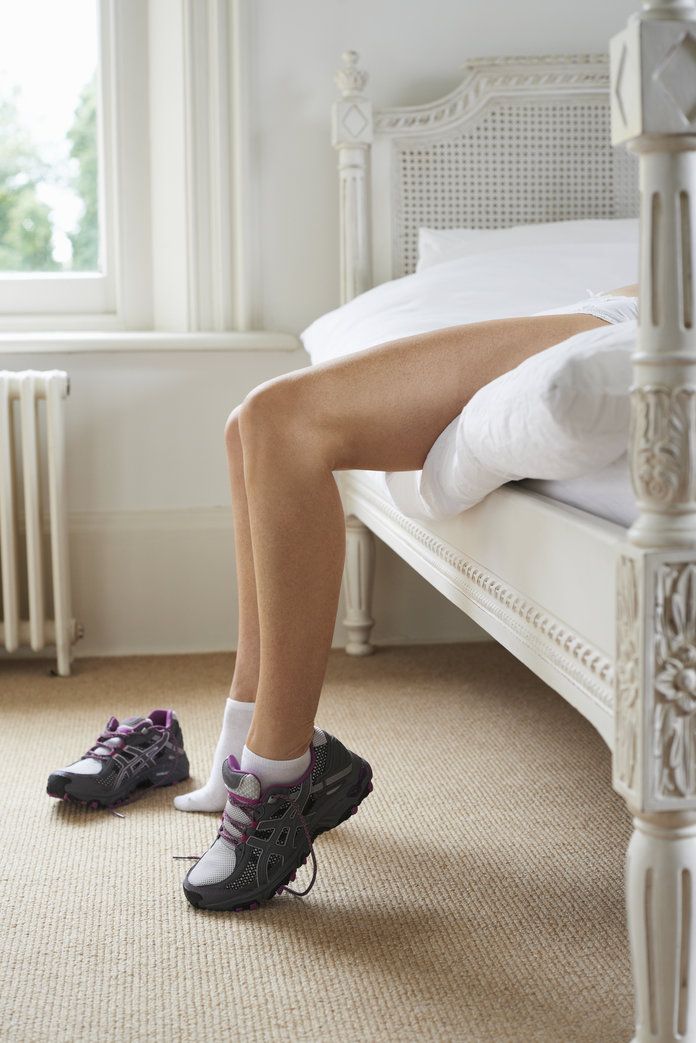
Everyone has heard that a contrast shower invigorates the body. But this technology can also be applied locally. Contrasting foot baths are a great way to relieve fatigue, improve blood circulation, and cleanse the skin. In addition, contrasting temperatures contribute to an increase in the tone of the body as a whole, activating the central nervous system and spurring the immune system.
How to make foot baths:
You can also use hot and cold baths separately. Hot ones are suitable if the legs feel cold or heavy, and cool ones are suitable when you need to relieve fatigue and pain. It is better to increase the temperature of the hot bath gradually, so you will contribute to the gradual expansion of blood vessels.
It is better to increase the temperature of the hot bath gradually, so you will contribute to the gradual expansion of blood vessels.
The healing power of a relaxing foot massage is impossible to ignore. Firstly, it is pleasant, and secondly, it really helps to relieve muscle tension and improve blood flow. The correct sequence is important here: it’s worth starting with kneading the heels and arch of the foot. Then you can proceed to more "aggressive" actions, pressing the knuckles on the foot and making circular movements. Then the inner arch of the foot needs to be rubbed quite intensively (from heel to toe). But when massaging the calves and shins, it is worth making gentle movements from the bottom up.
It is recommended to apply foot gel with troxerutin after the massage. It tones and pleasantly cools, and also has anti-inflammatory, anti-edematous and antioxidant effects. There are two of them in the CONSUMED assortment: a gel containing 2% troxerutin and a gel with the addition of additional components - leech extract and horse chestnut (you can use the one that will give you the best effect on an ongoing basis, everything is individual).
It is useful to complete the massage with kneading exercises: circular rotations of the feet, walking on tiptoe and heels, raising the legs up. Exercise will also help absorb the gel.
If the legs are chronically disturbed, there may be problems with the veins and blood vessels: a tendency to varicose veins, lymphovenous insufficiency. In such cases, you should immediately consult a doctor who will prescribe the best course of treatment. The course program often includes dietary supplements based on Diosmin and Hesperidin as aids. They help reduce vein extensibility and control venous congestion, reduce capillary permeability, increase their resistance (stability).
The CONSUMED assortment includes venotonic foot products based on these components: Flebonne and Venotonic.
Venotonic promotes:

Phlebonnet helps:
Preparations can be found in two forms of release: 30 and 60 tablets.
dietary supplement. IS NOT A MEDICINE. BEFORE USE, IT IS RECOMMENDED TO CONSULT WITH A SPECIALIST.
Beauty Blog
Can't live without high heels or are you on your feet all day? As a result - by the evening the legs "buzz", become "heavy" and swell. According to statistics, more than 50% of women face this problem. Fortunately, professionals know several proven ways that will return lightness to the legs after a hard day. Elle.ru chose the best products and asked Karina Shubs, pedicure specialist at Beauty Corner, to give effective tips to help relieve tired feet and relax after a hard day's work.
1 way - foot baths
One of the most effective procedures, after which the result is immediately noticeable, are contrast baths. It is necessary to fill the bathtub with cold water up to the ankle and take at least 33 steps in the water. If it is not possible to take a bath, you can take two basins - pour warm water into one, cool water into the other. It is better to start the procedure with a warm bath, and finish it in a cool bath (it is recommended to alternate baths at least 10 times). The procedure can be done with sea salt (as an option, regular table salt is also suitable), which relieves fatigue and also speeds up the process of skin regeneration. Baths with ready-to-use cosmetics containing coniferous extracts help to relieve fatigue. The contents of the package must be poured into the water and put your feet in the bath for 20 minutes.
Method 2 - kneading exercises
To quickly cope with the symptoms of fatigue, it is recommended to walk on toes for 2-3 minutes, then lower your feet, stand on your heels and walk like them for the same time. After that, you should perform circular rotations with your feet, ten times in each direction. To complete the exercises, stretch your legs forward (sitting or lying down), pull your socks “towards you” and hold them in this position for several seconds. A very effective exercise is aimed at the outflow of blood from the feet, which can be performed in the morning and evening. To do this, you need to lie on the sofa, raise your legs up, and, leaning your feet against the wall, stay in this position for five minutes. In this case, you can apply any nourishing or cooling cream to your feet that has time to be absorbed during this time. Beauticians recommend doing this exercise in the morning so that you can feel lightness in your legs all day later.
After that, you should perform circular rotations with your feet, ten times in each direction. To complete the exercises, stretch your legs forward (sitting or lying down), pull your socks “towards you” and hold them in this position for several seconds. A very effective exercise is aimed at the outflow of blood from the feet, which can be performed in the morning and evening. To do this, you need to lie on the sofa, raise your legs up, and, leaning your feet against the wall, stay in this position for five minutes. In this case, you can apply any nourishing or cooling cream to your feet that has time to be absorbed during this time. Beauticians recommend doing this exercise in the morning so that you can feel lightness in your legs all day later.
Elle.ru's choice: Peppermint Foot Bath Salt, The Body Shop ; Gel for tired legs, La Ric ; Sensations Cooling Nerd Hand & Foot Lotion, Christina Fitzgerald ; Revitalizing foot cream against dryness and cracks "Intensive Care", Garnier ; Foot cream "Pink heels", Lush
3 way - self-massage
Massage perfectly relieves tired legs.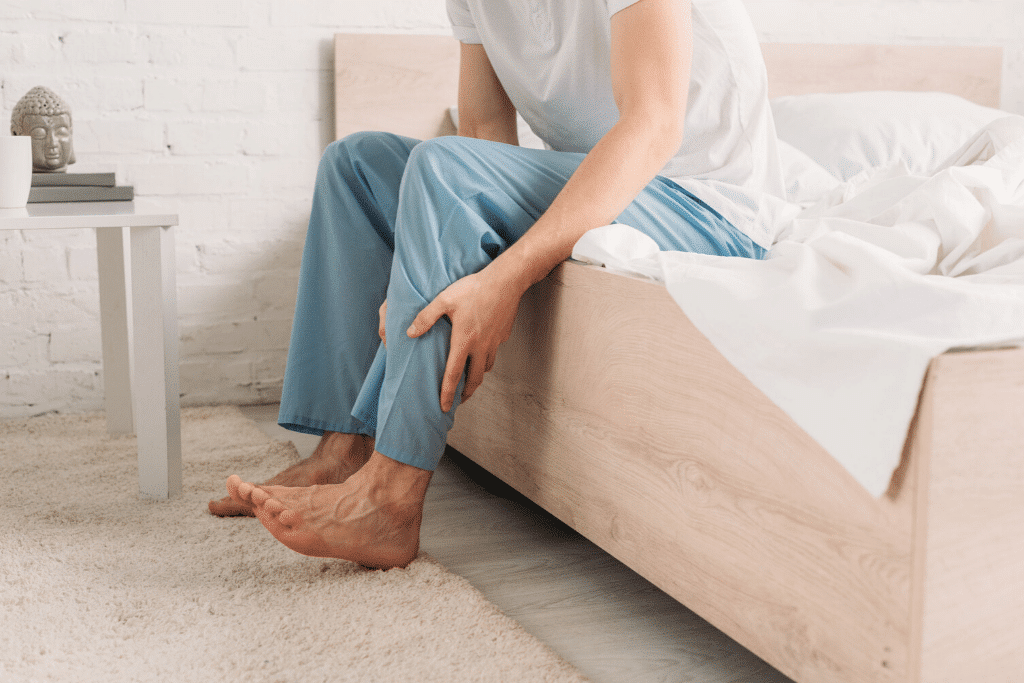 It is necessary to apply a nourishing cream or oil on the feet, then actively knead them with your thumbs. We pay special attention to the heel and instep of the foot. Then clench your hand into a fist and use your knuckles to work the entire foot in a circular motion. Calves and shins should be massaged with light movements from the bottom up.
It is necessary to apply a nourishing cream or oil on the feet, then actively knead them with your thumbs. We pay special attention to the heel and instep of the foot. Then clench your hand into a fist and use your knuckles to work the entire foot in a circular motion. Calves and shins should be massaged with light movements from the bottom up.
4th way - cosmetics
Foot creams and sprays containing coniferous extracts, mint, menthol, fir or juniper have a pleasant cooling effect and help to return the feeling of lightness to the feet.
Elle.ru choice: Nourishing Foot Cream with Aloe Vera and Apricot Oil Nourishing Foot Cream, Swiss Nature ; Sos care for tired legs with herbal ingredients, Yves Rocher ; Foot antiperspirant against bad smell, overheating and itching sensations, Neutrogena "Norwegian Formula" ; Aromatherapy Soothing Foot Bath Salt Marine Mineral Bath, СND ; Relaxing and refreshing foot gel Relaxlegs, Methode Jeanne Piaubert;
5 way spa pedicure
Undoubtedly, a professional pedicure is a good way to pamper your feet.